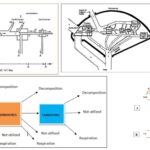How to use a codon chart?
How to use a codon chart?
Please login to submit an answer.
A codon chart is a reference table that correlates each three-nucleotide codon in an mRNA sequence with its corresponding amino acid or translational signal (such as start or stop)
When using the chart, first verify that your sequence is oriented from the 5′ end to the 3′ end so that codons are read in the correct order
Begin by dividing the mRNA sequence into groups of three nucleotides; each group constitutes a codon that will specify one amino acid
Locate the first nucleotide of a codon along one designated axis of the chart (commonly the left-hand side) and identify the second nucleotide on the corresponding header or adjacent axis; the intersection of these axes narrows down the options
Within the selected cell, find the column or marker that corresponds to the third nucleotide to complete the identification of the codon
Read the amino acid abbreviation or stop signal written in that cell to determine which amino acid is encoded by the codon
Use the chart to identify important codons: the start codon (typically AUG, which encodes methionine) that signals the beginning of translation, and the stop codons (commonly UAA, UAG, or UGA) which mark the end of the protein-coding sequence
Recognize that many amino acids are encoded by more than one codon; this redundancy is a key feature of the genetic code that helps mitigate the effects of point mutations
Repeat the process for each codon in the mRNA sequence to systematically build the complete sequence of amino acids for a protein
Cross-check your translated sequence against trusted educational resources or interactive tools for accuracy, ensuring a robust understanding of gene expression at the molecular level
Understand that while transfer RNA (tRNA) molecules play a crucial role in bringing amino acids to the ribosome, the codon chart is used strictly for deciphering the mRNA codons without involving the anticodon sequences present on tRNA
Practice by transcribing sample mRNA sequences, dividing them into codons, and then applying the chart to translate each codon into its respective amino acid, reinforcing the method and honing accuracy in the translation process
- Share on Facebook
- Share on Twitter
- Share on LinkedIn
Helpful: 0%




